CURACAO
History

History
Cities in CURACAO
| Jan thiel baai | Piscadera bay | Willemstad |
History
Arowaks
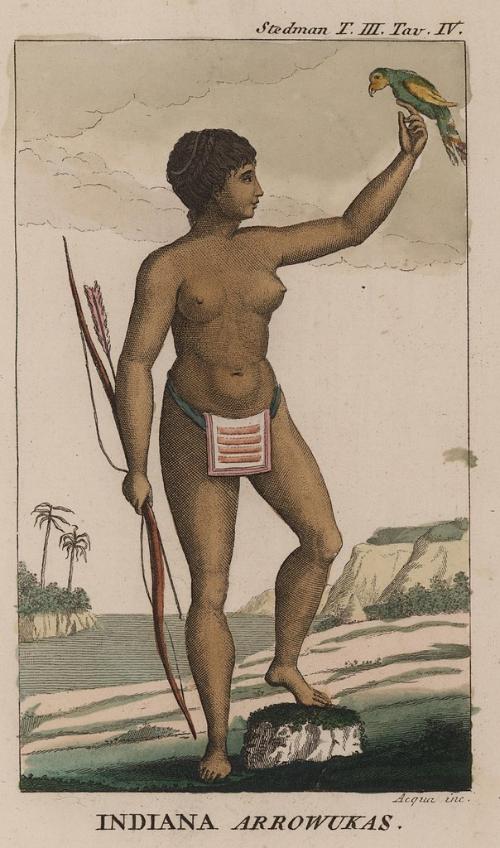 Arwak WomanPhoto: John Gabriel Stedman in the public domain
Arwak WomanPhoto: John Gabriel Stedman in the public domain
Little is known about the original inhabitants. Excavations indicate that Curaçao must have been inhabited for hundreds of years. The Indians, Arawaks, came from mainland South America. Evidence for this is the fact that they used the same objects and worked and lived in the same way as the Indians on the South American mainland. They were primitive, Stone Age Indians who thrived on fishing and vegetable food.
Curacao "discovered"
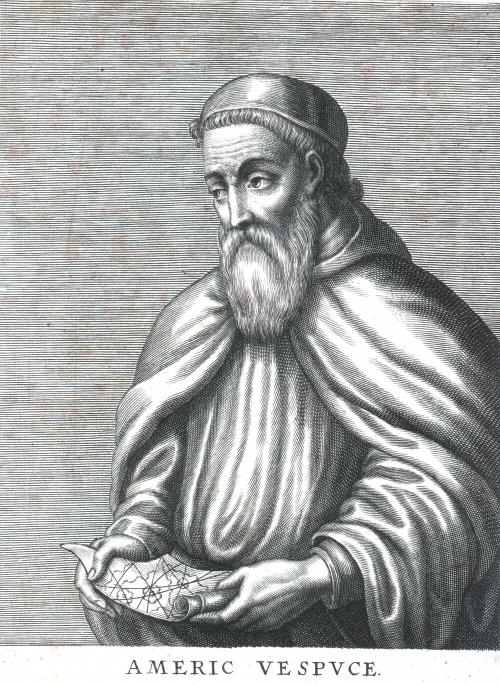 Amerigo Vespucci CuracaoPhoto: Public domain
Amerigo Vespucci CuracaoPhoto: Public domain
Historians disagree on who discovered Curaçao. It is known that it was discovered in 1499, either by Alonso de Ojeda or by Amerigo Vespucci, after whom the American continent is named. Vespucci is known to have visited Curaçao. No written evidence is known of a visit to Curaçao by Alonso de Ojeda. The Spanish called the islands "Islas de los Gigantes" (Islands of the giants) because the Native American population stood head and shoulders above the Spaniards. In 1513, the Spanish declared the ABC islands "Islas Inutiles" (useless islands) because of the lack of gold and natural resources. The Indians were then taken as slaves to the island of Hispaniola.
Dutch rule
The Dutch came into the picture towards the end of the 16th century. They needed a lot of salt for herring fishing and because of the Eighty Years' War (1568-1648) the Spaniards and the Portuguese decided to stop supplying salt to the Dutch. Their eye then fell on the richly-filled salt pans of the Caribbean and an attempt was made to establish a military base in the Caribbean. In 1633 the West India Company (WIC) founded a support center on Sint Maarten and in 1634 Curaçao was conquered. This went quite easily because the Spaniards hardly defended the island.
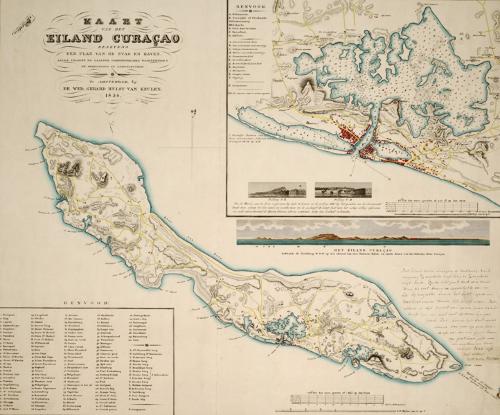 Map Curacao 1836Photo: Public domain
Map Curacao 1836Photo: Public domain
The island was therefore used as a port of departure, but due to the natural harbor, the Schottegat, it quickly developed into an important trade center. It became a depot of textiles, furniture and colonial products for the ships that were in transit to America and Europe. From 1673 to 1800, Curaçao was attacked several times by the French. However, the French did not succeed in conquering Curaçao. In 1804, 1805 and 1807, the English attacked Curaçao. The resistance in 1807 was very limited and the English took the island. In 1814 Curaçao was returned to the Netherlands during the London Convention. By the end of the nineteenth century, Curaçao was in deep crisis. Trade declined sharply and crops failed.
20th century
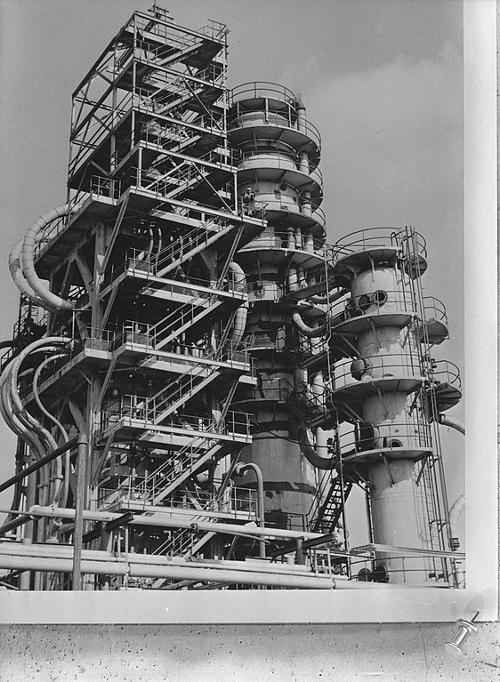 Curacao refineryPhoto: Public domain
Curacao refineryPhoto: Public domain
In 1914, Shell began with the exploitation of petroleum in Venezuela and that would be a major event for Curaçao. The oil was refined (purified) in Curaçao, and business and employment increased explosively. Another consequence was that the refinery and other companies that were going to establish themselves in Curaçao attracted thousands of foreign workers. Dependence on the refinery also posed a great risk. In 1929, for example, the supply and the price of oil fell sharply, with the result that of the 11,000 people who worked in the oil industry, only 3,400 remained. During the Second World War, Curaçao was occupied first by the English and later by the Americans to defend the island against the Germans. The refinery provided a large share of the fuel supply for the Allied armies and was therefore of great strategic value. However, the damage was very limited. Major changes brought about the "Statute for the Kingdom of the Netherlands" in 1954. This was a treaty in which the Netherlands, Suriname and the Netherlands Antilles gave almost complete independence of government. That meant autonomy in all areas except defense and foreign affairs. On November 25, 1975 this statute was amended; Suriname became a completely independent republic. This changed again on 1 January. Aruba received the "Status Aparte" and since that date the Netherlands Antilles consist of Curaçao, Bonaire, Sint-Maarten, Sint-Eustatius and Saba. In November 1993, a referendum took place on Curaçao in which those entitled to vote could give their opinion on the relationship with the Netherlands or full independence. An overwhelming majority voted in favor of maintaining the relationship with the Netherlands. In 1994 it was also decided that the five islands would continue to work together within one constitutional context. As a result, the future for the islands and therefore also for Curaçao looks a lot more certain.
2000-2005
Parliament decided in mid-2000 that the Dutch may settle freely in the Netherlands Antilles (National Ordinance Admission and Deportation = LTU). The only conditions that are set are that the Dutch have a certificate of good conduct and can prove that they have accommodation and sufficient means of support.
By opening the borders, the Antillean government wanted to stimulate the economy. The relaxation of the national ordinance also makes it easier for companies to acquire additional knowledge. This also has a favorable effect on the competitive position, because the economy could be revived, partly due to the influx of economically active persons.
In the island council elections of May 2003, the controversial workers' party Frente Obrero (FOL) of Anthony Goddett won the large majority in Curaçao. The party took eight of the 21 seats, doubling compared to 1999. The ruling party PAR retained five seats and Errol Cova's Trade Union Party gained three seats. The National People's Party PNP fell from five to two seats, the social party MAN retained two seats and newcomer LNPA (No Step Backwards) gained one seat. Godett was released from prison shortly before the election, where he was held on suspicion of taking a bribe.
At the beginning of April 2004, the Antillean cabinet fell. Ersilia de Lannooy's National People's Party (PNP) withdrew its support for the coalition. As a result, it lost the majority in the 22 seats of Parliament (parliament). The Curaçao trade union party PLKP and the Democratic Party of Bonaire (PDB) also withdrew their support for the fallen cabinet.
Independent or not
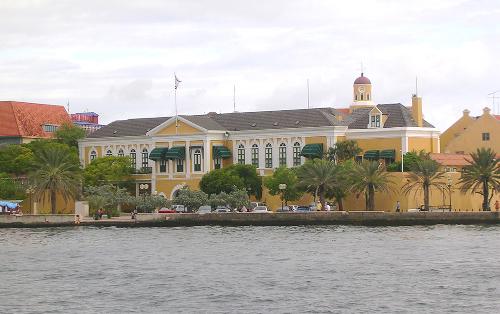 The Governor's Residence, in Fort Amsterdam, CuracaoPhoto: Roger W(CC BY-SA 2.0) no changes made
The Governor's Residence, in Fort Amsterdam, CuracaoPhoto: Roger W(CC BY-SA 2.0) no changes made
A referendum was held on April 8, 2005, in which the people of Curaçao could express their opinion on the desired political future of the island. The result of the referendum, per option, was as follows:
68% Option A: Autonomous country within the Kingdom of the Netherlands
5% Option B: Preserve the current Netherlands Antilles
4% Option C: Total independence
24% Option D: Province of the Netherlands
With the choice for option A, the population has followed the wishes of the majority of the politicians on the island.
2006-2010
During a mini-round table conference in The Hague on 11 October 2006, it was agreed with the Netherlands that Curaçao would receive the so-called separate status. Curaçao would thus become an autonomous country within the Kingdom of the Netherlands. As part of this agreement, the Dutch government has offered to restructure or take over a large part of the national debt. The agreements are summarized in a final statement, which has subsequently become the subject of much discussion in Curaçao. In the opinion of the opposition parties, of which the FOL was the most important, and the smallest coalition parties, the agreements did not go far enough. The largest coalition parties, PAR and PNP, defended the agreement. Ultimately, the agreement was rejected by a majority in the island council of Curaçao, after which the executive council fell apart and a new coalition was formed under the leadership of the FOL that had to complete the time until the new elections on April 20, 2007.
The rejection of the agreements created a lot of uncertainty for the economic and political future of Curaçao. Both in politics and among the population, supporters and opponents came up against each other. Opponents argued for renegotiations, but both the Balkenende III cabinet and the new Balkenende IV cabinet indicated that they did not support this, almost unanimously supported by the House of Representatives. Polls in Curaçao showed that the continuing political unrest significantly reduced support for the separate status, in favor of integration in the Netherlands (option D). This is probably partly due to the realization of this option: at the time of the referendum in April 2005 it was not yet known what this option might look like and was therefore not a realistic consideration for many. It was not until October 2006 that the Netherlands and the small islands of Bonaire, Saba and St. Eustatius agreed that this status would be based on the Dutch Municipalities Act.
The island council elections were therefore crucial and revolved entirely around the theme of final declaration. If the opponents were to achieve a majority, there was a danger of an impasse. In the extreme case, the exit of the other islands from the Netherlands Antilles would leave Curaçao as the only island of the Netherlands Antilles, with de facto autonomous status, but also with the sky-high national debt of the Netherlands Antilles.
Ultimately, neither the supporters nor the opponents achieved a clear majority in the island council elections. However, the two parties advocating the final statement, PAR and PNP, managed to reach an agreement with big loser FOL on the formation of a new coalition. It was agreed to vote again on the final statement. After a long meeting, the Curaçao Island Council voted in the night of 6 to 7 July 2007 under certain conditions with the final statement: PAR, PNP, FOL and DP now voted in favor (12 of the 21 seats). On August 28, an agreement was signed with the Netherlands on the constitutional process, after which the Island Council ratified this agreement a day later with 13 votes (PAR, PNP, FOL, DP and FK). The intention was to obtain the autonomous status of "land within the Kingdom" on December 15, 2008. In May 2008, Sint Maarten, Curaçao and the Netherlands in Curaçao definitively determined in the Steering Group that the target date of 15 December as the implementation date for the new constitutional relations is not feasible. However, it is possible to have all the necessary legislation ready by that date so that it can be submitted to the Dutch Parliament, the Parliament of the Netherlands Antilles and the Island Councils of Curaçao and Sint Maarten. Therefore, a round table conference will be organized on December 15, 2008 to assess the total package of legislation against the previously agreed criteria from the final declaration.
Looking at the planning, the parties have decided to request advice from the Council of State of the Kingdom on how to accelerate the autonomous status. This is desirable because Netherlands Antilles is actually increasingly dismantling.
2010-Present day
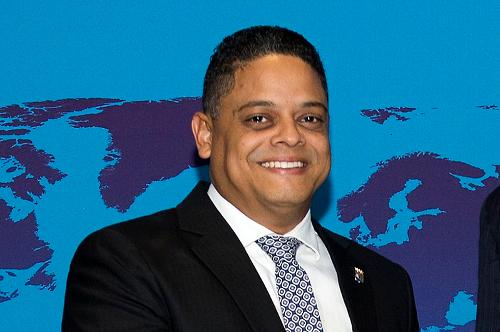 Rhuggenaath CuracaoPhoto:Ministerie van Buitenlandse Zaken CC 2.0 Generic no changes made
Rhuggenaath CuracaoPhoto:Ministerie van Buitenlandse Zaken CC 2.0 Generic no changes made
The Netherlands Antilles no longer exist since October 10, 2010. Aruba was already an independent country, Curaçao and Sint Maarten became so from that date. Bonaire, Saba and St. Eustatius became special Dutch municipalities of the Netherlands.
The Kingdom of the Netherlands now consists of four countries with their own governments: Aruba, the Netherlands, Curaçao and Sint Maarten. Bonaire, Saba and Sint Eustatius have a separate status within the Netherlands and are called the Caribbean Netherlands, together with Aruba, Curaçao and Sint Maarten they form the Caribbean part of the Kingdom of the Netherlands.
Between 12 and 21 November 2013, King Willem-Alexander and Queen Máxima visited the six islands in the Caribbean part of the Kingdom of the Netherlands. On November 18 and 19 it was Curaçao's turn. In April 2017 elections were held in Curaçao which were won by the liberal PAR of Eugene Rhuggenaath. He will be the new prime minister and will strive for good relations with the Netherlands. Former Prime Minister Schotte is sentenced in July 2017 to 3 years in prison for corruption and money laundering, but he is also not allowed to hold political office for 5 years. In January 2018, Aruba, Bonaire and Curacao will face an export ban and a sea, air and land blockade of the islands by Venezuela. In 2020 there is a disagreement between Curacao and the Netherlands about the conditions for a Corona loan from the Netherlands to Curacao. In june 2021 Gilmar Pisas is appointed as the new prime minister.
Slavery
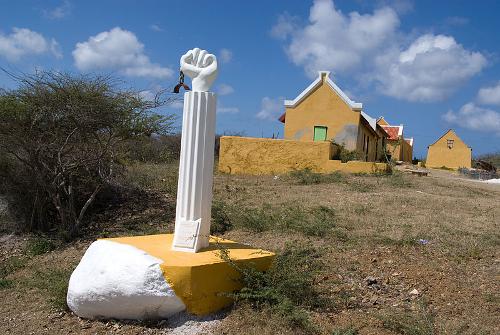 Monument to 1795 Slave Revolt, Landhuis Kenepa, CuraçaoPhoto: Charles Hoffman CC 2.0 Generic no chamges made
Monument to 1795 Slave Revolt, Landhuis Kenepa, CuraçaoPhoto: Charles Hoffman CC 2.0 Generic no chamges made
Because the local Indian population was not suitable as labor power, the most important commodity became the slave trade, with which large profits were made. From the beginning of the seventeenth century, Negro slaves were transported from Africa to Curaçao. These were sold to the English, Portuguese and Spanish colonies where large numbers of labor were needed for the enormous agricultural plantations. By 1660, Curaçao had grown into the center of the Caribbean slave trade. A total of approximately 100,000 slaves are believed to have been shipped to Curaçao. From 1713 it went downhill with the slave trade, partly due to the English competition. In general, less and less slaves were needed in Curaçao due to the lack of large-scale agriculture. In 1795, under the leadership of the slave Tula, a revolt broke out among the slaves. The reason was the poor living and working conditions on the plantations, but it soon grew into a revolt against slavery. After two weeks, however, the insurgents were defeated and Tula was killed.
In general, however, opposition to human trafficking grew and in 1818 Holland concluded a treaty with England to combat the slave trade. Despite the fact that the slave trade continued until the mid-nineteenth century, the import of slaves into the colonies was already prohibited in 1821. Slavery was abolished in Holland in 1863, but slaves remained very dependent on their former masters and the old power relations remained virtually unchanged until well into the twentieth century.
How did Curaçao get its name
There are many theories, including the following:
-the island is named after a fruit that occurs on the island, the Corossol
- derived from the word Curacan which stands for elongated or mighty
- derived from the word Corauaçu, meaning big plantation or high mountain
- derived from the Spanish word Corazón or the Portuguese Coraçâo, which means heart.
Sources
Bakker, J. / Nederlandse Antillen en Aruba
Koninklijk Instituut voor de Tropen
Encarta Encyclopedie
Erven Dorens, P. van / Curaçao
Bos & Co
Helm, R. van der / De Curaçao reisgids
Elmar
CIA - World Factbook
BBC - Country Profiles
Copyright: Team The World of Info